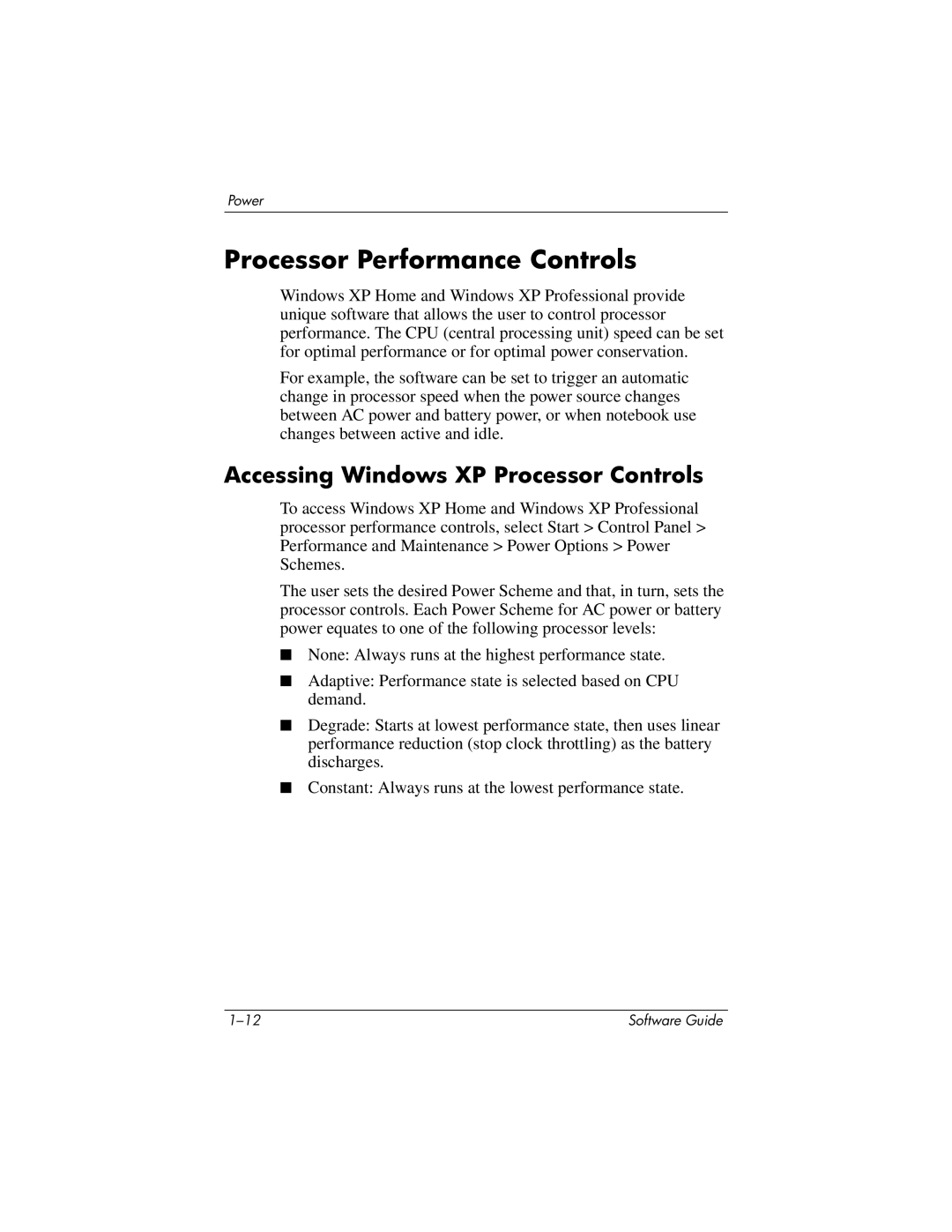
Power
Processor Performance Controls
Windows XP Home and Windows XP Professional provide unique software that allows the user to control processor performance. The CPU (central processing unit) speed can be set for optimal performance or for optimal power conservation.
For example, the software can be set to trigger an automatic change in processor speed when the power source changes between AC power and battery power, or when notebook use changes between active and idle.
Accessing Windows XP Processor Controls
To access Windows XP Home and Windows XP Professional processor performance controls, select Start > Control Panel > Performance and Maintenance > Power Options > Power Schemes.
The user sets the desired Power Scheme and that, in turn, sets the processor controls. Each Power Scheme for AC power or battery power equates to one of the following processor levels:
■None: Always runs at the highest performance state.
■Adaptive: Performance state is selected based on CPU demand.
■Degrade: Starts at lowest performance state, then uses linear performance reduction (stop clock throttling) as the battery discharges.
■Constant: Always runs at the lowest performance state.
Software Guide |
